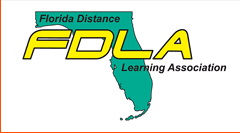Abstract
Our country, which is today the Dominican Republic, is a Spanish speaking country due to the historical and well known fact that the then Hispaniola Island or Santo Domingo was split into two different colonies by effect of the Aranjuez Treaty (1777), held between the two Colonial Metropolis of Spain and France thus establishing the French occupation of the territory of Haiti to the West and the Spanish territory to the East, and producing therefore the establishing of two different countries with two different languages (Spanish and French), in a land (Quisqueya) in which in pre-Colombian times was occupied by the aborigines, mainly the Tainos, and Caribes and the use of their now disappeared aborigine languages. The Dominican Republic achieved its independence in 1844 from the Haitian domination and was also occupied by a score of empires like the British, the French and the American domination (1916), but it has also been the settlement of former Black Slaves brought from the United States during the Lincoln Administration in the Peninsula of Samana as part of a political plan of the Haitian dictator Boyer to dominate the whole island and producing therefore a settlement of some Ten Thousands AfroAmericans who brought to our island American English. British English was also brought to our country in recent times by the settlement or immigration of workers from the island of Turk & Caicos (Caribbean British Possessions), and some other islands neighboring our country thus establishing in Cities Like San Pedro de Macoris and Puerto Plata a permanent residence of British Speaking People who brought with them not only their language but their customs, traditions and religion, like in Samana. Those important historical facts have shaped the linguistic map of our country marked by the diversity of those foreign influences, but the Spanish, more clearly the Dominican Spanish Language has survived the test of the time and history thus becoming the Official and Predominant Language of the country, and like Cuba and Puerto Rico, the two other former Spanish Colonies which are known as the Antillas Mayores are the exponents of the dialects of the Caribbean Spanish Language, unlike the neighbor countries of Jamaica, or the British and American Virgin Island or the Dutch-speaking islands of Curacao and Aruba, and needless to say of Haiti, our bordering country which with the event of history has developed the Haitian Creole as its National language. So the linguistic phenomenon of Translanguaging within the context of the Dominican and National Education cannot separately be examined solely on the basis of a pure linguistic, academic and scholastic fact, but further more as case of reaffirmation of our language and national identity. Spanish is the official and constitutional language of the Dominican Republic, and unlike the case of the United States of America where English and more precisely American English is considered to be the most widely and used Natural Language, but not still the Official one, in terms of Law and Constitution.
Recommended Citation
TAVAREZ-DACOSTA, PEDRO J. Dr.; Arias Reyes, Fransheska Lic.; and Tavarez Vasquez, Ivanna Del Pilar Mag.
(2025)
"Translanguaging Within the Scope of Dominican Pre-College and College Education,"
FDLA Journal: Vol. 9, Article 17.
Available at:
https://nsuworks.nova.edu/fdla-journal/vol9/iss1/17
Included in
Online and Distance Education Commons, Teacher Education and Professional Development Commons
